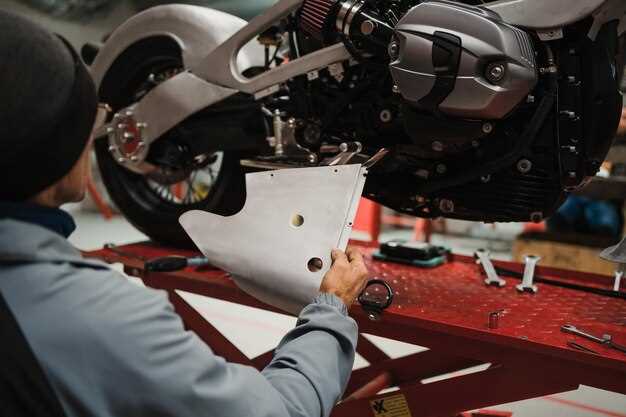
In the ever-evolving world of automotive performance, ECU tuning has emerged as a vital practice for enthusiasts and builders alike, particularly within the niche of Birkin car construction. Birkin cars, known for their lightweight designs and spirited driving capabilities, offer unique opportunities for enhancing engine performance through precise electronic control strategy modifications. This article delves into the essential ECU tuning techniques specifically tailored for Birkin car builders, enabling them to unlock the full potential of their vehicles.
Understanding the fundamentals of ECU tuning is crucial for achieving desired performance outcomes. The Engine Control Unit (ECU) manages various engine parameters, and by modifying its programming, builders can enhance horsepower, torque, and throttle response. However, approaching ECU tuning requires a sophisticated understanding of not only the vehicle’s hardware but also the intricate software that dictates its performance. This article will explore the specific methodologies and tools employed in the tuning process, ensuring that builders can effectively optimize their Birkin cars while maintaining reliability and drivability.
Additionally, successful ECU tuning demands a systematic approach that involves data logging, calibration, and consistent testing. Birkin car builders will benefit from incorporating these practices into their tuning regime, allowing them to create tailored solutions that accommodate various driving styles and performance goals. By leveraging these advanced techniques, builders can enhance their craft, push the limits of their vehicles, and ultimately gain a competitive edge in the automotive community.
Software Adjustments for Enhanced Performance
In the realm of ECU tuning for Birkin car builders, software adjustments play a crucial role in optimizing vehicle performance. The primary objective is to fine-tune the engine’s parameters to achieve better power output, efficiency, and overall drivability. Understanding how to manipulate these software settings is essential for any builder looking to elevate their vehicle’s capabilities.
One of the primary adjustments made during the tuning process is modifying the fuel maps. These maps determine the amount of fuel injected into the engine at various RPMs and load conditions. By recalibrating these maps, tuners can ensure the engine receives the right fuel mixture, enhancing combustion efficiency and power delivery. Optimizing fuel trims can yield significant improvements, allowing for a smoother throttle response and increased torque.
Ignition timing is another critical software parameter that can be adjusted for enhanced performance. By advancing the ignition timing, tuners can improve combustion efficiency, resulting in a better power curve. However, this adjustment must be made carefully to avoid knocking, which can lead to engine damage. Fine-tuning ignition timing based on fuel quality and engine characteristics is vital for achieving optimal performance without compromising reliability.
Boost control is essential in turbocharged applications. Adjusting the wastegate actuation point and modifying the pressure maps can greatly influence the boost levels produced by the turbocharger. By optimizing these controls, tuners can increase the engine’s performance while maintaining safe operating limits, ensuring that the vehicle performs at its best under various driving conditions.
Furthermore, adjustments to the throttle response settings can enhance the driver experience. By modifying the throttle mapping, tuners can create a more engaging driving experience, making the power delivery feel more responsive and immediate. This is particularly beneficial in performance applications, where immediate throttle response is critical for track performance.
Finally, the integration of custom software solutions allows for ongoing performance monitoring and adjustment. Using diagnostic tools, tuners can analyze engine performance data in real-time, making it possible to refine adjustments continuously. This iterative process ensures the car remains at peak performance as conditions change, such as ambient temperature and humidity levels.
In conclusion, software adjustments are vital for maximizing the performance of Birkin cars. Through careful calibration of fuel maps, ignition timing, boost control, and throttle response, builders can significantly enhance driving characteristics. The adoption of custom software solutions further facilitates an ongoing optimization process, allowing builders to create truly exceptional vehicles.
Hardware Modifications to Maximize Tuning Results

To achieve optimal ECU tuning results in Birkin Car Builders, it’s crucial to focus on hardware modifications that complement software changes. Improving the engine’s performance not only enhances power output but also contributes to overall vehicle reliability. This section explores essential hardware upgrades that can significantly boost tuning results.
1. Intake System Enhancements
Upgrading the air intake system is vital for improving airflow to the engine. A high-performance air filter can increase air volume while reducing restriction. Additionally, a cold air intake system helps lower intake temperatures, resulting in denser air, which can enhance combustion efficiency and overall horsepower.
2. Exhaust System Upgrades
Replacing the factory exhaust system with a high-flow performance exhaust can significantly reduce back pressure. Stainless steel headers and cat-back systems are excellent choices, as they improve exhaust gas flow. This reduction in back pressure can lead to improved throttle response and increased power, providing a solid foundation for effective tuning.
3. Fuel System Improvements
For enhanced performance, consider upgrading the fuel injectors and fuel pump. Larger, high-flow injectors allow for more fuel delivery, which is essential when running higher boost levels or increased horsepower. An upgraded fuel pump ensures a steady supply of fuel under high demand, preventing lean conditions during tuning.
4. Engine Management Systems
Investing in an aftermarket engine management system can unlock advanced tuning capabilities. These systems allow for precise control over fuel maps, ignition timing, and other parameters. They also provide the flexibility to accommodate future upgrades, making them invaluable for long-term performance tuning.
5. Turbocharger and Intercooler Upgrades
If the vehicle is turbocharged, upgrading the turbocharger and intercooler can provide significant gains. A larger turbo can produce more power but may require improved engine internals to handle increased stress. An upgraded intercooler lowers intake temperatures, which not only enhances power but also contributes to engine longevity.
6. Lightweight Components
Reducing the vehicle’s weight can improve overall performance. Consider replacing stock parts with lightweight alternatives, such as a carbon fiber hood or aluminum wheels. This modification can enhance acceleration and handling, making the vehicle more agile and responsive to tuning adjustments.
In conclusion, hardware modifications play a crucial role in maximizing the effectiveness of ECU tuning for Birkin Car Builders. By upgrading the intake and exhaust systems, improving the fuel delivery, investing in robust engine management, and considering other enhancements, builders can maximize performance and achieve their desired tuning results.
Data Logging and Analysis for Continuous Improvement

Data logging is a critical component in the ECU tuning process, especially for Birkin car builders who seek to maximize performance and reliability. By systematically collecting and analyzing data from various vehicle sensors, builders can gain invaluable insights into the car’s behavior under different conditions.
Importance of Data Logging: Effective data logging captures essential parameters such as engine RPM, vehicle speed, air-fuel ratio, and ignition timing. This information serves as the foundation for making informed tuning decisions. For Birkin enthusiasts, understanding these metrics allows for fine-tuning of performance attributes–balancing horsepower, torque, and fuel efficiency.
Data Analysis Techniques: After logging, the analysis phase involves interpreting collected data. Employing software tools can help visualize trends and anomalies. Techniques such as statistical analysis and comparison against baseline values enable builders to identify performance gaps and make necessary adjustments.
Feedback Loop for Continuous Improvement: The integration of data logging and analysis creates a feedback loop that promotes continuous improvement. Every tuning adjustment should be followed by a new data logging session to assess the impact of modifications. This iterative process ensures that each change contributes positively to the car’s performance.
Real-time Monitoring: Utilizing real-time data logging enhances the tuning process by allowing builders to monitor vehicle performance during test drives. This immediate feedback helps to quickly identify issues and optimize settings on-the-fly, thus improving the overall tuning experience.
Conclusion: For Birkin car builders, data logging and analysis is not merely a technical requirement but a vital tool for achieving superior performance. By leveraging accurate data collection and analytical methods, builders can refine their tuning strategies, ensuring continuous improvement and the ultimate driving experience.











